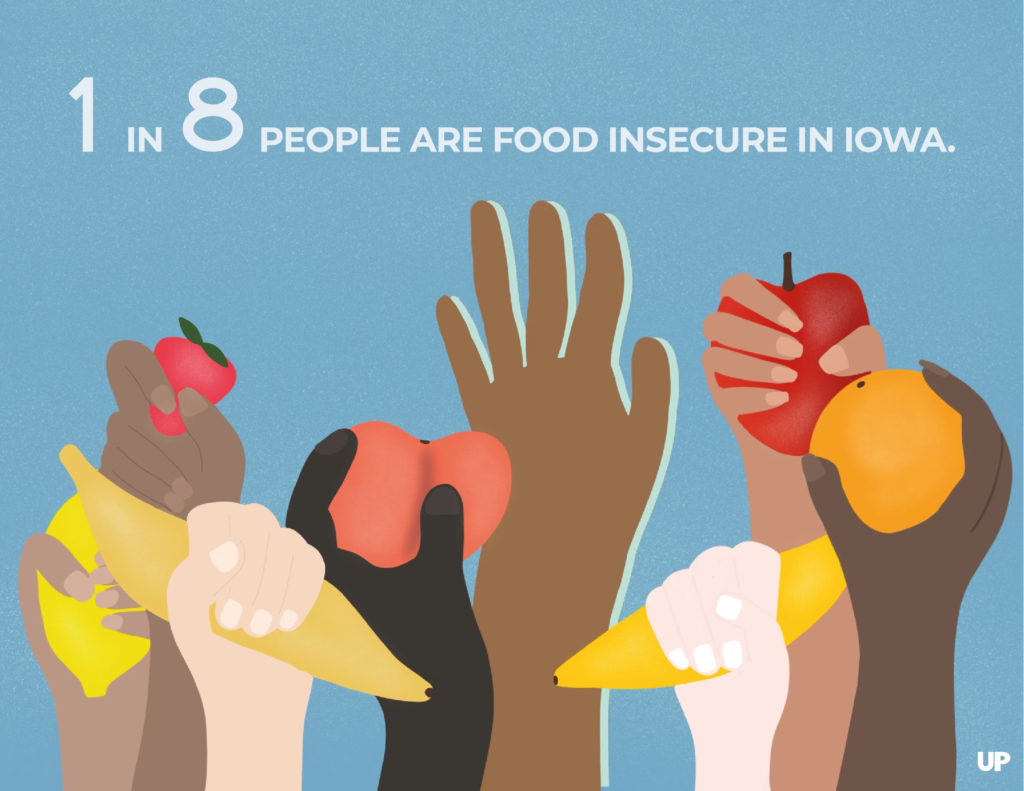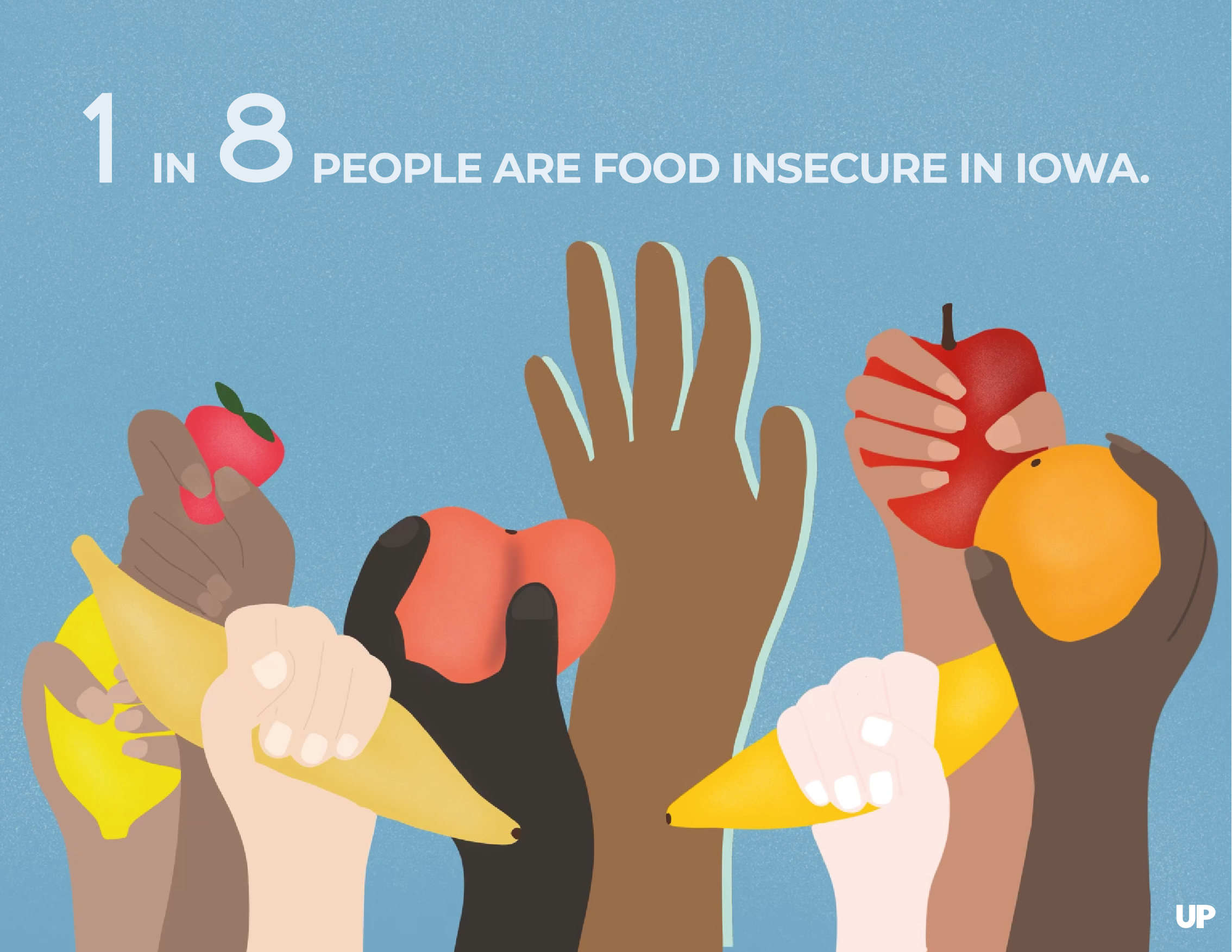A closer look at the growing food insecurities in the midwest.

While some Americans worried about adjusting to remote work during the pandemic, one in eight Americans were struggling with another problem: access to food. After many individuals lost their jobs, insufficient financial resources and inability to travel to a grocery store exacerbated problems, making food insecurity a prevalent reality.
Many people who experience food insecurity reside in what is known as a food desert. A food desert occurs when people in a specific location lack access to healthy food options in grocery stores.
About 10 percent of the Iowa population was considered food insecure in 2020, according to the Feeding Iowa Task Force. This led to Iowa food banks distributing 25 percent more food than expected, according to the Gazette.
In response to concerns about food insecurity during the pandemic, federal allocations for food emergency resources were expanded. This means that qualifications for federal benefits became easier to obtain. However, as the world continues to open back up and emergency allotments end, total Supplemental Nutrition Assistance Program (SNAP) funds will decrease by 29.5 million dollars, according to the Iowa Hunger Coalition. The SNAP program is a federally funded program designed to help families purchase healthy foods to move towards self-sufficiency.
Andrew Cheyne, director of staff at the Food Research and Action Center, has worked closely with the SNAP program. “The USDA estimates that on average, SNAP beneficiaries per person per month are going to lose $82 in grocery money,” Cheyne says. “[That is] really significant for anyone who is surviving on those benefits. And, it’s also going to take much-needed economic stimulus out of the economy, right? Every dollar in SNAP benefits generates between $1.50 and $1.80 during [an economic] downturn, so the emergency allotments will go away at some point.”
With the current status of the economy, Cheyne is concerned that people will see a higher rate of food insecurity with the reduction in SNAP benefits approaching. Cheyne worries that this will not only negatively impact people who have been affected by COVID job displacement but also the individuals and organizations that rely on SNAP participants to buy their products.
“Our biggest concern, right now, is the looming end of the public health emergency,” Cheyne says. “There is some indication it could be extended for another 90 days, but even if that’s the case, it’s still in the coming weeks and months. We will see the unwinding of several provisions just in the Supplemental Nutrition Assistance Program, or SNAP.”
Emergency allotments were given to 40 states throughout the country. While this is being used in a great way, the country has seen how quickly people can be placed out of work and how big of a problem food insecurity truly is. People saw that hunger can strike in a variety of ways.
“We [are at an enlightening] moment in the pandemic where it was just shown, in, unfortunately, all too stark of terms, that hunger can affect anyone,” Cheyne says. “We want to make sure that the SNAP experience is just like [any other consumer’s experience]—that you’re able to be treated with dignity [and] choose the foods that are appropriate for your family. Because of equal treatment at the retail setting, in particular, I think [using SNAP benefits] is a helpful way to ensure that we destigmatize the program and really show the benefits.”
Iowa is trying to battle food insecurity with the use of the Double Up Bucks program. The program matches purchases of fruits and vegetables made with a SNAP EBT card. Up to ten dollars can be matched per day. When a consumer purchases fruits and vegetables at a participating Double Up Bucks location—which can be farmer’s markets, small businesses, or chain retailers—they will receive a specific amount of funds through matching. In 2021, 173,074 individuals were able to benefit from the Double Up Bucks program, according to the Healthy Incentives Annual Report from Iowa Healthiest State Initiative.
Aryn McLaren, director of Healthy Incentives for the Iowa Healthiest State Initiative, works with families and growers in Iowa. “Being able to utilize a farmer’s market as a point of access for nutritious, healthy foods can be a huge resource not only for participants in SNAP who are looking for those products but also for the producers that live there,” McLaren says. “Everyone wants to have the healthiest food for their families, so being able to offer that access to everyone, regardless of how much money they’re making or what their family situation is, is extremely important.”
To learn more about how to help those struggling with food insecurity, contact your local food bank.

